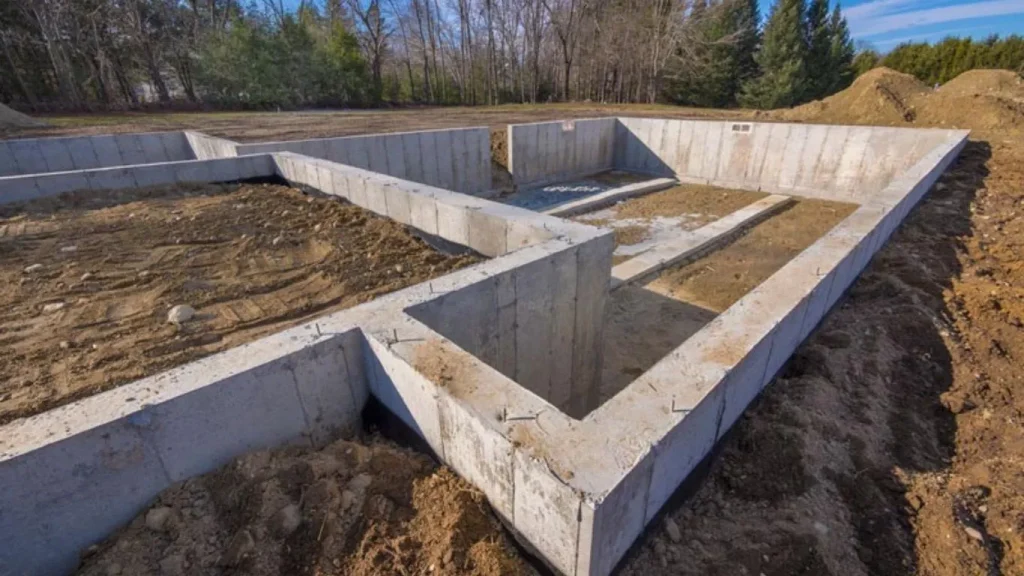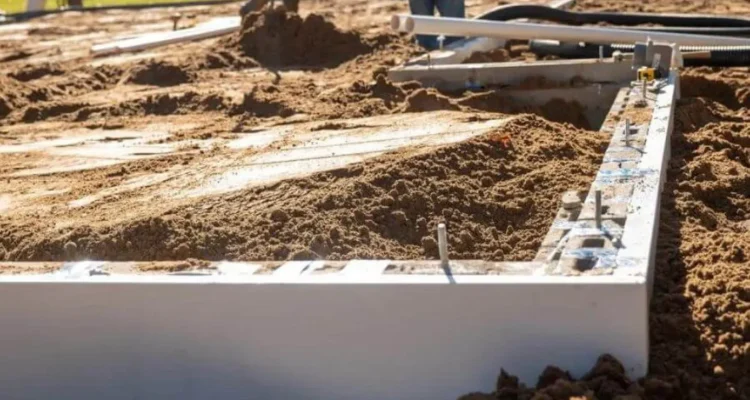Introduction to Stem Wall Foundations
Stem wall foundations are a type of concrete foundation commonly used in residential and commercial construction. They consist of concrete walls extending above the ground level, supporting the structure and distributing its weight evenly to the ground.

Definition and Purpose of a Stem Wall Foundation
A stem wall foundation serves several purposes, including elevating the structure above ground level to prevent moisture damage, providing a stable base for load-bearing walls, and creating a barrier against soil moisture infiltration.
Types of Stem Wall Foundations
T-Shaped Stem Wall Foundations
T-shaped stem wall foundations include footings that extend below the frost line, providing stability in regions prone to freezing temperatures.
Slab-on-Grade Foundations with Stem Walls
This type combines the benefits of a slab foundation with the structural support of stem walls, suitable for areas with stable soil conditions.
Components of a Stem Wall Foundation
Concrete Footings
These are the base elements of the foundation, designed to distribute the load of the structure over a larger area of soil.
Stem Walls
Vertical concrete walls that connect the footings to the building’s structure, typically reinforced with steel bars for added strength.
Anchor Bolts
Embedded in the concrete footings, anchor bolts secure the structure to the foundation, preventing displacement during seismic events.
Construction Process of a Stem Wall Foundation
The construction begins with site preparation, followed by installing formwork to shape the foundation. Concrete is then poured into the forms and allowed to cure, forming a solid base for the structure.
Advantages of Using Stem Wall Foundations
- Elevates the structure above potential moisture sources.
- Provides a stable base for load-bearing walls.
- Allows for easier maintenance of plumbing and electrical systems.
Disadvantages of Stem Wall Foundations
- Vulnerable to cracking due to soil settlement.
- Requires proper waterproofing to prevent moisture infiltration.
Comparison with Other Foundation Types
Comparison with Slab Foundations
Stem wall foundations offer better protection against moisture but may be more expensive to construct compared to slab foundations.
Comparison with Basement Foundations
Unlike basements, stem wall foundations do not provide additional living space but offer similar structural benefits.
Common Issues and Maintenance Tips
Cracking and Settlement
Regular inspections and timely repairs can mitigate issues related to cracking and settlement in stem wall foundations.
Waterproofing
Applying effective waterproofing membranes and drainage systems can prevent moisture-related damage to stem wall foundations.
Cost Considerations
The cost of a stem wall foundation varies based on factors such as the size of the structure, local building codes, and soil conditions.
Environmental Impact of Stem Wall Foundations
Concrete production for stem wall foundations can have environmental implications due to its high carbon footprint, prompting advancements in eco-friendly building materials.
Regulatory and Code Requirements
Builders must adhere to local building codes and regulations governing the design and construction of stem wall foundations to ensure structural integrity and safety.
Future Trends in Stem Wall Foundation Technology
Innovations in materials and construction techniques are aimed at enhancing the durability and sustainability of stem wall foundations.
FAQs about Stem Wall Foundations
What is the lifespan of a stem wall foundation?
Stem wall foundations can last for several decades with proper maintenance.
How can I prevent cracks in a stem wall foundation?
Ensuring proper site preparation and using quality materials can help prevent cracks.
Are stem wall foundations suitable for all types of soil?
They are suitable for stable soil conditions but may require engineering solutions in expansive or unstable soils.
Can I add a basement to a home with a stem wall foundation?
It’s possible but may require significant modifications and structural considerations.
What are the signs of moisture problems in a stem wall foundation?
Signs include damp spots on walls, musty odors, and visible mold growth.
Conclusion
Stem wall foundations are integral to modern construction practices, offering structural stability and protection against moisture damage. Understanding their components, construction process, and maintenance requirements is essential for ensuring the longevity of buildings.


Congratulation!